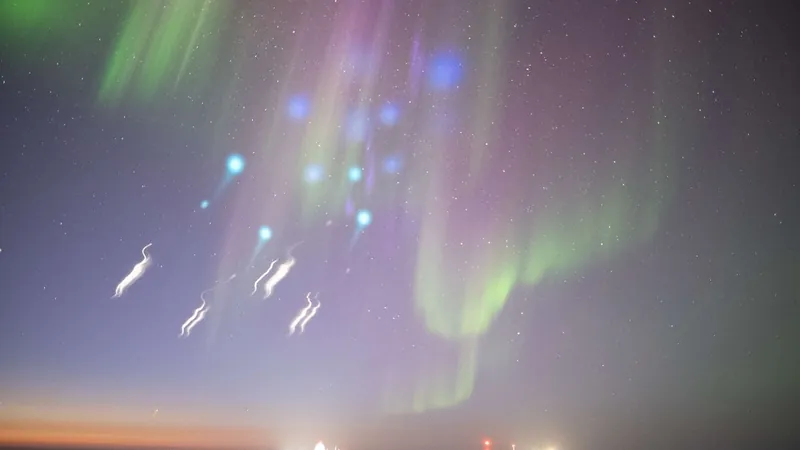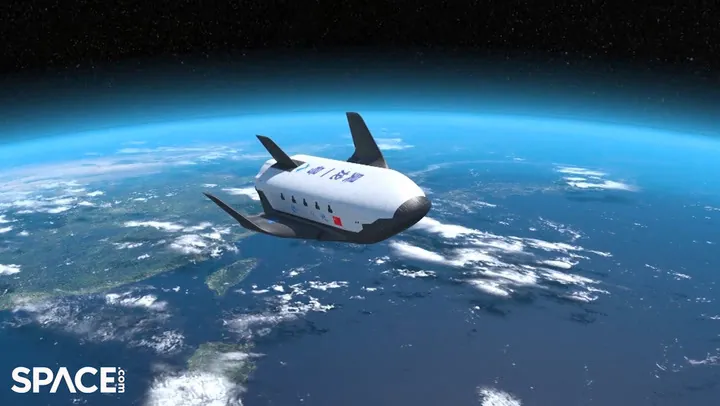
NASA’s Stunning Rocket Launches Illuminate Alaskan Skies and Unveil Secrets of Auroras! (Stunning Photos Inside)
2025-03-31
Author: Daniel
NASA’s Stunning Rocket Launches Illuminate Alaskan Skies
In an awe-inspiring display that lit up the night sky over Alaska, NASA successfully launched two rockets into the stunning auroras last week, revealing critical insights into our planet’s upper atmosphere. This spectacular event was part of an innovative experiment known as Auroral Waves Excited by Substorm Onset Magnetic Events, or AWESOME, orchestrated by a team of experts from the University of Alaska Fairbanks (UAF).
Launch Details
On the morning of March 25, two of three planned sounding rockets took off from the Poker Flat Research Range, situated north of Fairbanks. As these rockets soared into the electrifying auroras, they released vapor tracers—clouds of gas that created vivid light displays visible to residents across northern Alaska. These enticing bursts serve not just as a visual feast, but also as valuable data points for scientists studying atmospheric dynamics and the behavior of charged particles in these upper regions.
Researcher Insights
Mark Conde, the lead researcher from the Geophysical Institute at UAF, expressed his excitement: “I’m absolutely delighted that the conditions aligned perfectly, allowing us to launch and carry out this pivotal experiment.”
Rocket Specifications
The first rocket to ascend into the skies was a 42-foot Terrier-Improved Malemute, swiftly followed by a larger 70-foot Black Brant XII rocket. These rockets measured various phenomena during an auroral substorm—an explosive brightening event that occurs in the auroras—while also deploying vapor tracers and pressure sensors at distinctive altitudes throughout Alaska.
Significance of the Experiment
The small instruments deployed during this journey are crucial for assessing the energy and momentum transferred to Earth's thermosphere by these explosive events, which in turn can affect the stability of the upper atmosphere. Understanding these intricate interactions between the Earth’s atmosphere and the dazzling auroras—triggered by solar particles colliding with our magnetic field—may significantly enhance space weather forecasting and our approach to predicting solar disruptions that can affect communication systems and satellites.
Observational Strategy
Ground stations staffed with UAF students and researchers were strategically placed in various Alaskan towns, including Utqiagvik, Kaktovik, Toolik Lake, Eagle, and Venetie, allowing for diversified observational coverage during the launches. “Having the two-stage rocket deploying over central Alaska and the four-stage rocket off the north coast was like conducting two independent tracer experiments at once,” Conde noted, highlighting the intricate coordination required for such an ambitious undertaking.
Future Launch Plans
While the third rocket—a two-stage Terrier-Improved Malemute—remains on hold due to a minor motor issue, excitement continues as the team works diligently to resolve it. They hope to launch this final rocket before the window closes on April 6, further ensuring that the secrets of the auroras reveal themselves to scientists eager to decode their mysteries.
Conclusion
Stay tuned as we continue to follow this groundbreaking research that not only captivates the imagination but also propels our understanding of the cosmos to unprecedented heights!



 Brasil (PT)
Brasil (PT)
 Canada (EN)
Canada (EN)
 Chile (ES)
Chile (ES)
 Česko (CS)
Česko (CS)
 대한민국 (KO)
대한민국 (KO)
 España (ES)
España (ES)
 France (FR)
France (FR)
 Hong Kong (EN)
Hong Kong (EN)
 Italia (IT)
Italia (IT)
 日本 (JA)
日本 (JA)
 Magyarország (HU)
Magyarország (HU)
 Norge (NO)
Norge (NO)
 Polska (PL)
Polska (PL)
 Schweiz (DE)
Schweiz (DE)
 Singapore (EN)
Singapore (EN)
 Sverige (SV)
Sverige (SV)
 Suomi (FI)
Suomi (FI)
 Türkiye (TR)
Türkiye (TR)
 الإمارات العربية المتحدة (AR)
الإمارات العربية المتحدة (AR)